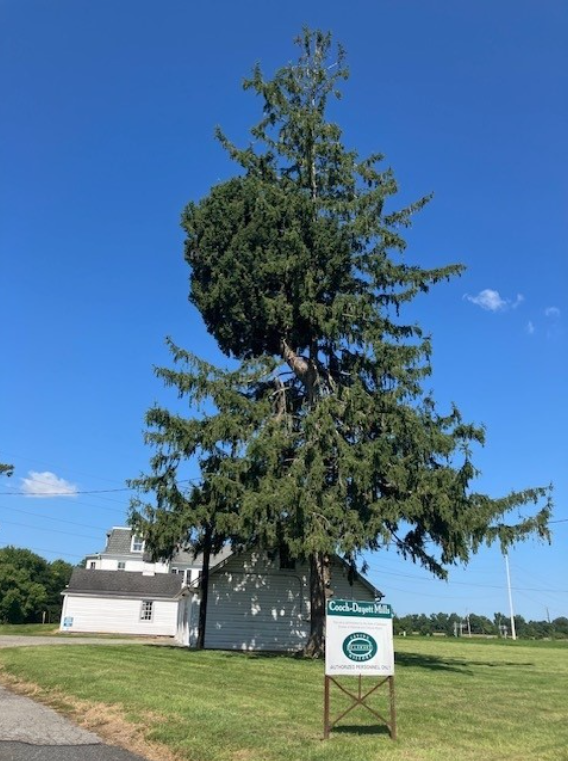Have you seen the witch’s broom at Cooch’s Bridge Historic Site?
By Leoné Cahill-Krout, site supervisor at Cooch’s Bridge Historic Site
Every day, thousands of cars drive through the intersection of Old Baltimore Pike and Sunset Lake Drive. They often take in the beautiful greenery and colonial scenes as they pass the Cooch’s Bridge Historic Site, but many of them might not notice that one of the trees on the property is much different from the others.

Perhaps often mistaken as a cell phone tower disguised as a tree, few passersby will notice the unusual nature of this tree on the Cooch-Dayett miller’s house — if they do a double take, they’ll see an entire tree growing out of the center of another tree.
This botanical mutation is often referred to as a “witch’s broom.” Historically, it was thought to be a product of witchcraft, but some growths can also look like a broom is stuck in the tree’s branches.
This mutation can occur in a variety of ways. Fungi, insects, viruses or other environmental factors cause a disturbance in the host tree’s main shoot and prevent its ability to suppress the growth of side shoots. It can happen to all kinds of trees, but it is most common in conifers (trees with cone-shaped seeds). The side shoot that sprouts from the mutated tree will grow into a miniature version of the original tree.
Recently, New Castle County proposed a concept for hiking trails that would link Glasgow Park to Iron Hill and pass through Cooch’s Bridge Historic Site. This new route would draw nature enthusiasts and bring more eyes to this strange tree, as well as open opportunities for Cooch’s Bridge to partner with Delaware’s Forest Service and other environmental groups on new science programs.
The witch’s broom tree proves that there is always something to learn from the unusual side of nature!


